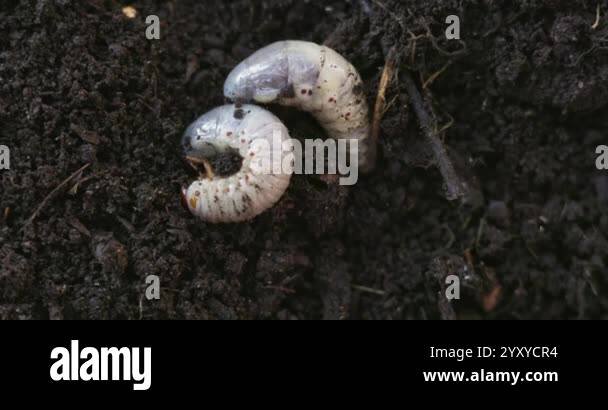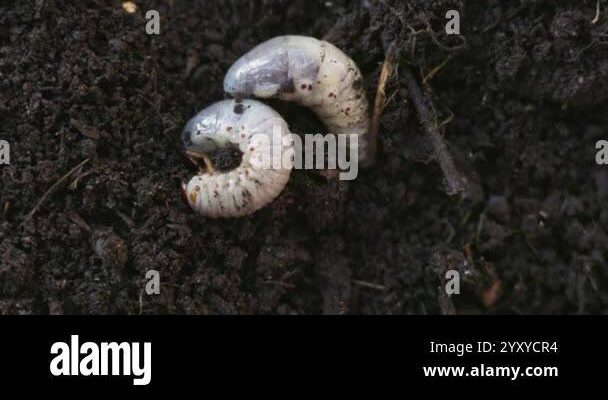
Grub worms are the larval stage of various beetles, most commonly June beetles and Japanese beetles. They thrive in the soil and can wreak havoc on your grass roots. But here’s the kicker: not all grub worms dig down to the same depth. Some prefer to hang out just below the surface, while others might descend further into the earth. So, let’s dive into the world of grub worms and explore just how deep they really go!
What Are Grub Worms?
Before we jump into depth, let’s take a moment to understand what grub worms actually are. These little guys are the larvae of beetles. They start off as tiny eggs laid in the soil, and when they hatch, they become grubs. These grubs primarily feed on roots of grass and plants, which is why they can cause significant damage to lawns and gardens.
Grub worms usually have a soft, white body with a darker head. They’re about 1 inch long when fully grown and have a distinctive curved shape. Think of them like little squirmy maggots, but they’re not actually maggots at all! Their diet includes decaying organic matter, which helps break down nutrients in the soil. This is their way of contributing to the ecosystem—even if their munching habits can be a pain for gardeners.
How Deep Do Grub Worms Live?
Here’s the significant part: grub worms typically live between 2 to 8 inches deep in the soil. This depth can vary based on several factors like soil temperature, moisture, and even the time of year. In the warmer months, you might find them closer to the surface, munching away on grass roots. But as temperatures drop in the fall, they often burrow deeper to avoid the cold.
You might be wondering why they go so deep. Think of it as a survival tactic. By tunneling down, grubs can escape harsh weather conditions and find more consistent moisture levels. So, while they might cause damage up top, they’re smart enough to seek shelter below.
Factors Affecting Depth
Several factors influence how deep grub worms dig into the soil:
- Soil Temperature: Grubs tend to stay closer to the surface in warmer temperatures. As the soil cools, they dig deeper.
- Moisture Levels: Grubs love moist soil. If your yard is well-watered, they might stay near the surface. However, if the soil is dry, they may dig deeper for moisture.
- Season: In spring and summer, when it’s hot, grubs are more active and tend to roam closer to the soil’s surface. In winter, they burrow down to escape the cold.
- Food Availability: If there’s plenty of grass and plant roots to munch on, they’ll stay higher up. Less food might push them deeper.
Understanding these factors can help you manage grub populations better. For instance, if you know they’re likely deeper in winter, there might be different strategies for lawn care during those months.
Signs of Grub Worm Infestation
Now that you know how deep grub worms can live, it’s essential to recognize the signs that they might be taking over your lawn. Here are some telltale signs:
- Brown Patches: If you notice brown patches on your lawn, it might not just be a lack of water. Grubs often eat the roots, leading to dead sections of grass.
- Easy Pull-Up: When you tug on a patch of grass, it should hold tight. If it pulls up easily, there might be grubs munching below.
- Presence of Birds: If you see birds pecking around your yard more than usual, they may be hunting for grubs. They can be a natural way of controlling grub populations!
Catching an infestation early is crucial. If you notice these signs, it might be time to take action before they cause significant damage.
How to Control Grub Worm Populations
If you find that grubs have made their home in your lawn, don’t worry! There are steps you can take to control their population. Here are some effective strategies:
- Natural Predators: Encourage birds and beneficial insects, like nematodes, which feed on grubs. A biodiverse garden can help keep grub numbers low.
- Healthy Lawn Practices: Keep your grass healthy by watering properly and mowing at the right height. A robust lawn can often outgrow grub damage.
- Timing Pesticides: If the infestation is severe, you may consider using pesticides. However, applying them at the right time—usually in late summer to early fall—is essential for effectiveness.
By following these methods, you can help keep grub populations in check and ensure your lawn remains lush and vibrant.
So, how deep do grub worms live in the soil? Typically, they hang out between 2 to 8 inches below the surface, where they feast on roots and organic matter. Understanding their depth can help you better manage these little lawn invaders. Remember, maintaining a healthy lawn and recognizing the signs of infestation early can make a world of difference.
Whether you’re dealing with a minor grub presence or a full-blown invasion, knowledge is your best tool. By knowing how deep they go and what affects their behavior, you can take the right steps to keep your garden thriving. Grub worms might be pesky, but with a little attention and care, you can keep them from becoming a bigger problem in your yard!

